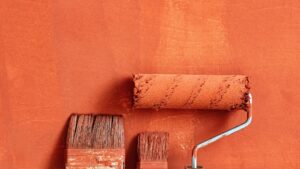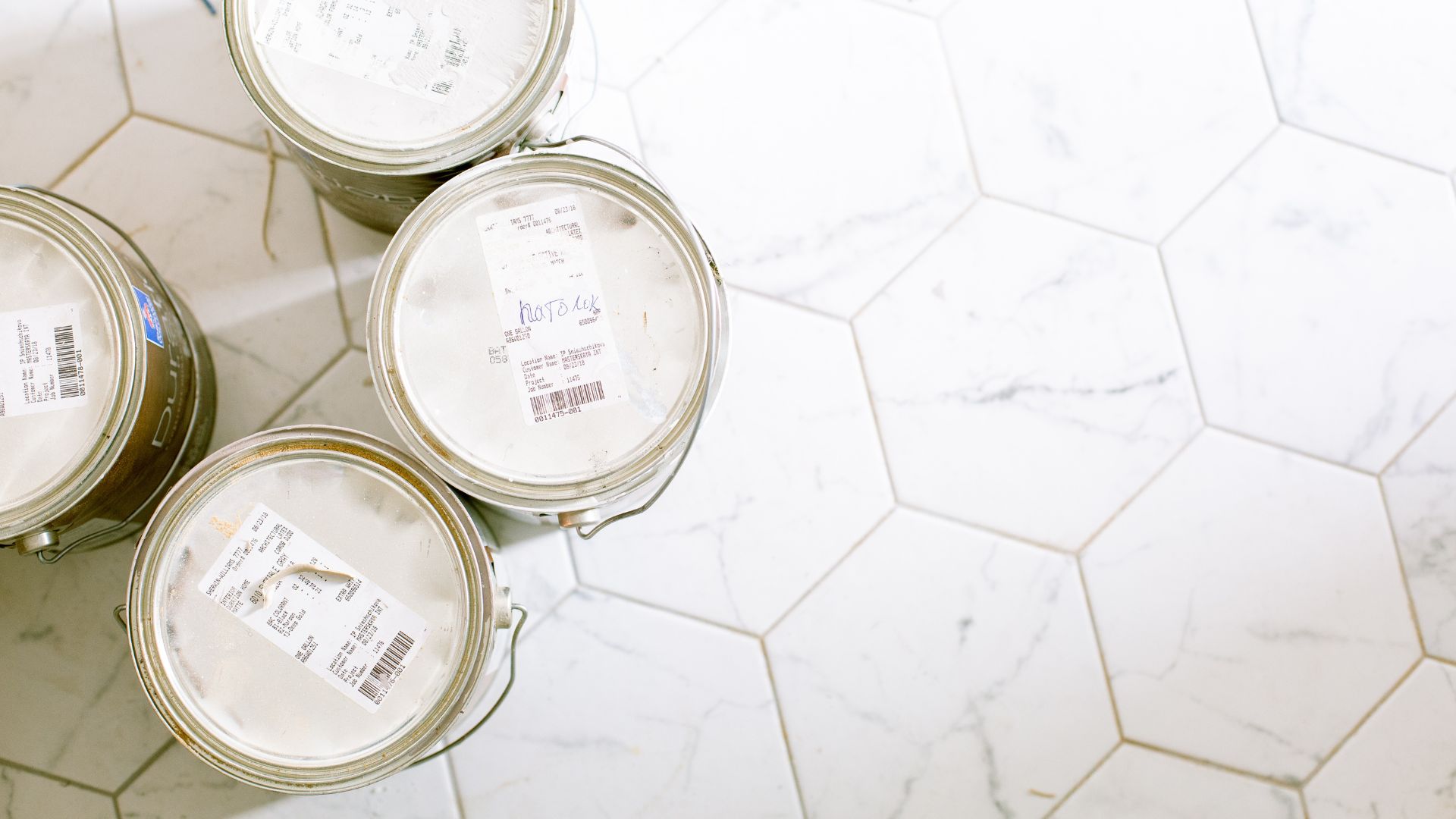When considering painting cinder block walls, the question often arises: is applying a sealer before painting necessary? Understanding the importance of this step can significantly impact the outcome of your painting project.
The Purpose of a Sealer:
Sealing the Surface: Cinder block walls are porous by nature, prone to absorbing moisture and contaminants. A sealer acts as a protective barrier, preventing excessive absorption of paint and ensuring a more even finish.
Enhancing Adhesion: Just like primer, a sealer improves paint adhesion to the surface. It promotes a stronger bond between the cinder block and the paint, contributing to a longer-lasting finish.
Moisture Protection: Sealing the surface helps in resisting moisture penetration, reducing the risk of issues like mold, mildew, and paint deterioration over time.
Factors Influencing the Need for Sealing:
- Surface Condition: If the cinder block wall is relatively new, clean, and free from major imperfections, applying a sealer might be optional.
- Location: For exterior walls or areas prone to moisture exposure, applying a sealer becomes more crucial due to increased vulnerability to weather elements.
- Desired Finish: The type of finish you desire for your painted wall can influence the necessity of a sealer. A smoother, more uniform finish might benefit from a sealed surface.

Brown Paint Brushes and Paint Roller
Benefits of Sealing Before Painting:
- Improved Paint Performance: Enhances paint adhesion and longevity, leading to a more durable and aesthetically pleasing finish.
- Surface Protection: Acts as a protective barrier, guarding the cinder block against moisture and potential damage.
- Preventive Measure: Reduces the likelihood of issues such as efflorescence (white salt deposits) or paint peeling due to moisture absorption.
Steps for Applying Sealer:
- Clean the Surface: Ensure the cinder block wall is clean and free from dust, dirt, and debris before applying the sealer.
- Choose the Right Sealer: Select a sealer suitable for masonry surfaces. Consider factors like porosity and moisture resistance.
- Apply Evenly: Use a roller or brush to apply an even coat of sealer to the wall. Follow the manufacturer’s instructions regarding drying time and reapplication if needed.
So,…
While not always mandatory, applying a sealer before painting cinder block walls offers multiple benefits. It creates a sealed surface that enhances paint adhesion, protects against moisture, and contributes to a longer-lasting and more visually appealing finish.
Consider the condition of the surface, the location of the wall, and the desired outcome when deciding whether to apply a sealer. In many cases, this additional step can significantly enhance the overall quality and durability of your painted cinder block walls.
Types of Sealers for Cinder Block Walls:
Acrylic-Based Sealers:
- Benefits: These sealers are easy to apply, dry quickly, and provide good adhesion. They offer protection against moisture and can enhance the appearance of the painted surface.
- Considerations: While acrylic sealers offer decent protection, they might not be as durable as some other types, especially in high-traffic areas or extreme weather conditions.
Silane/Siloxane Sealers:
- Benefits: These sealers penetrate deep into the pores of the cinder blocks, providing excellent water repellency without changing the appearance of the surface. They offer long-term protection against moisture.
- Considerations: They might be a bit more expensive and may take longer to dry compared to acrylic-based sealers. However, their superior water repellency can outweigh these factors in certain situations.
Epoxy-Based Sealers:
- Benefits: Epoxy sealers form a tough, protective film on the surface, providing excellent resistance against moisture, chemicals, and abrasion. They offer a highly durable finish.
- Considerations: These sealers can be more challenging to apply and might require precise mixing ratios. They are often used in heavy-duty or industrial settings due to their robust nature.
Polyurethane Sealers:
- Benefits: These sealers offer exceptional durability and chemical resistance. They create a tough, glossy finish that is highly protective against moisture and abrasion.
- Considerations: Polyurethane sealers can be more expensive and might require professional application for optimal results. They are commonly used in areas that require a high level of protection.
Factors Influencing the Choice of Sealer:
- Location: Consider whether the wall is indoors or outdoors, as outdoor walls might require a more durable and weather-resistant sealer.
- Purpose: Determine the primary goal of sealing whether it’s for moisture protection, enhanced adhesion, or both.
- Budget: Evaluate the cost and weigh it against the level of protection and durability required for your specific project.
Conclusion:
Choosing the right sealer before painting your cinder block walls is a critical step in ensuring the longevity and quality of the finished paint job. Assess the needs of your project, including the surface condition, environmental factors, and desired outcome, to select the most suitable sealer.
Each type of sealer offers distinct advantages, so consider the specific properties and requirements of your cinder block surface before making your choice. By selecting the appropriate sealer and applying it correctly, you can significantly enhance the durability and protection of your painted cinder block walls.
Comparison tabular on this
| Sealer Type | Benefits | Considerations |
|---|---|---|
| Acrylic-Based | – Easy application | – Moderate durability |
| – Quick drying | – Might not withstand extreme conditions well | |
| – Enhances appearance | ||
| Silane/Siloxane | – Excellent water repellency | – Higher cost |
| – Long-term protection | – Longer drying time compared to acrylic sealers | |
| – Does not alter surface appearance | ||
| Epoxy-Based | – Superior durability | – Challenging application |
| – Resistant to moisture, chemicals, and abrasion | – Precise mixing ratios required | |
| – Forms a tough protective film | – More commonly used in heavy-duty or industrial settings | |
| Polyurethane | – Exceptional durability | – Higher cost |
| – Strong resistance to moisture and abrasion | – May need professional application | |
| – Creates a tough, glossy finish | – Commonly used in high-protection applications |
Wrapping up
When it comes to sealing cinder block walls before painting, the final consideration lies in choosing the right sealer tailored to your project’s specific needs. Assessing factors such as durability requirements, ease of application, and budget considerations will guide you toward the most suitable sealer type.
Each type of sealer offers distinct advantages, from ease of application to exceptional durability and protection. Whether it’s an acrylic-based sealer for basic protection, a silane/siloxane sealer for invisible yet robust defense, or epoxy or polyurethane sealers for high-traffic areas, your choice will significantly impact the performance and longevity of your painted cinder block walls.
Take the time to evaluate your project’s demands and select the sealer that aligns best with your goals. By choosing the right sealer and applying it correctly, you enhance the durability, protection, and overall quality of your painted cinder block walls, ensuring they stand the test of time.

For over a decade, I’ve been Mike, an artist, crafter, and designer deeply immersed in the Croc world. I thrive on crafting unique, size-inclusive patterns, fostering creativity, and sharing them on ktforum.com. My designs aim to ignite your creative spark and delight you, ensuring clarity and ease of use through rigorous testing. Join me in expressing your creative flair and showcasing your craft with joy.
Related Posts
- Painting Cinder Block Walls: Do You Need Primer
Cinder block walls offer durability and strength, but when it comes to adding color or…
- Power Washing Before Painting Cinder Block Walls: A Crucial Step
Preparing your cinder block wall before painting is key to achieving a successful and long-lasting…
- Preparing a Cinder Block Surface for Painting: A Step-by-Step Guide
Cinder blocks, with their rough texture, can be a fantastic canvas for adding color and…
- Cleaning Cinder Block Walls Before Painting: A Comprehensive Guide
Painting a cinder block wall can transform its look and elevate the aesthetics of your…

